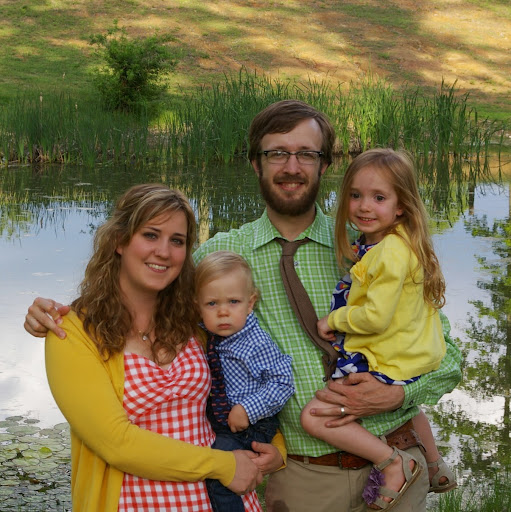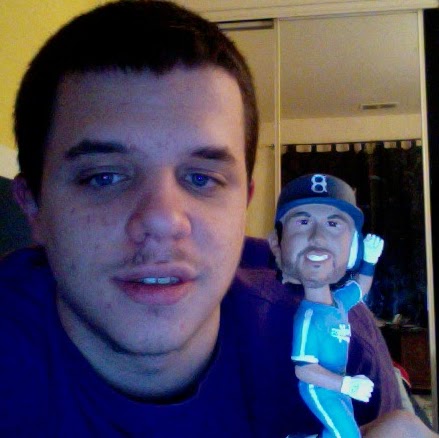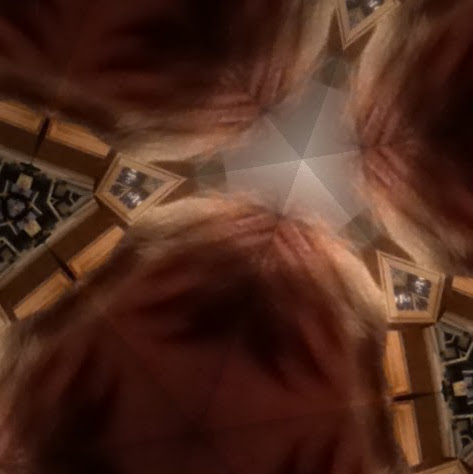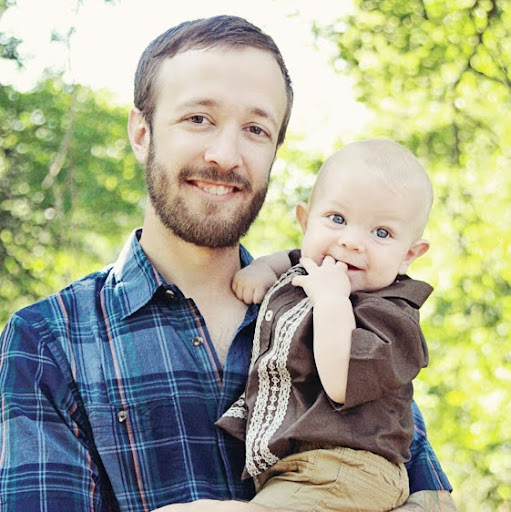Christopher A Novak
age ~59
from Shoreline, WA
- Also known as:
-
- Christopher Alan Novak
- Christophe A Novak
- Christoph A Novak
- Christphr A Novak
- Christopher A Novack
- Jeffrey Platt
- Phone and address:
- 544 NE 97Th St, Seattle, WA 98115
Christopher Novak Phones & Addresses
- 544 NE 97Th St, Seattle, WA 98115
- 1916 N 46Th St #B, Seattle, WA 98103 • 2064535882
- Shoreline, WA
- Manassas, VA
- Warwick, RI
- Washington, DC
- Cranston, RI
- St Petersburg, FL
Work
-
Company:Craig keto - albert anthony real estateFeb 2012
-
Position:Realtor's assistant
Education
-
School / High School:University of PittsburghApr 2012
-
Specialities:BA in History
Medicine Doctors

Christopher Novak
view sourceSpecialties:
Pediatrics
Work:
Childrens Choice Pediatrics
514 Delaware Ave, Bethlehem, PA 18015
6108656545 (phone), 6107589595 (fax)
514 Delaware Ave, Bethlehem, PA 18015
6108656545 (phone), 6107589595 (fax)
Education:
Medical School
Hahnemann University School of Medicine
Graduated: 1986
Hahnemann University School of Medicine
Graduated: 1986
Procedures:
Circumcision
Hearing Evaluation
Vaccine Administration
Hearing Evaluation
Vaccine Administration
Conditions:
Acute Bronchitis
Acute Pharyngitis
Acute Sinusitis
Otitis Media
Skin and Subcutaneous Infections
Acute Pharyngitis
Acute Sinusitis
Otitis Media
Skin and Subcutaneous Infections
Languages:
English
Description:
Dr. Novak graduated from the Hahnemann University School of Medicine in 1986. He works in Fountain Hill, PA and specializes in Pediatrics. Dr. Novak is affiliated with St Lukes Hospital.

Christopher P. Novak
view sourceSpecialties:
Public Health & General Preventive Medicine
Work:
Santa Fe Public Health
605 Letrado St STE D, Santa Fe, NM 87505
5054762600 (phone), 5054762694 (fax)
Department Of Public Health
1400 Weimer Rd, Taos, NM 87571
5757582073 (phone), 5757513031 (fax)
605 Letrado St STE D, Santa Fe, NM 87505
5054762600 (phone), 5054762694 (fax)
Department Of Public Health
1400 Weimer Rd, Taos, NM 87571
5757582073 (phone), 5757513031 (fax)
Education:
Medical School
Univ of Manitoba, Fac of Med, Winnipeg, Man, Canada
Graduated: 1996
Univ of Manitoba, Fac of Med, Winnipeg, Man, Canada
Graduated: 1996
Procedures:
Destruction of Benign/Premalignant Skin Lesions
Vaccine Administration
Vaccine Administration
Conditions:
Abnormal Vaginal Bleeding
Acne
Anemia
Benign Thyroid Diseases
Bipolar Disorder
Acne
Anemia
Benign Thyroid Diseases
Bipolar Disorder
Languages:
English
Spanish
Spanish
Description:
Dr. Novak graduated from the Univ of Manitoba, Fac of Med, Winnipeg, Man, Canada in 1996. He works in Taos, NM and 1 other location and specializes in Public Health & General Preventive Medicine.
Us Patents
-
Games With Targeting Features
view source -
US Patent:7963833, Jun 21, 2011
-
Filed:Oct 15, 2004
-
Appl. No.:10/966824
-
Inventors:Christopher M. Novak - Issaquah WA, US
Alistair J. Baxter - Dundee, GB
Billy Thompson - Angus, GB
David Jones - Fife, GB
Peter Wong - Redmond WA, US -
Assignee:Microsoft Corporation - Redmond WA
-
International Classification:A63F 9/24
-
US Classification:463 2, 463 50
-
Abstract:The present invention is directed generally toward computer-implemented methods for targeting objects in a gaming system. One aspect of the invention is directed toward a method for targeting an object in a gaming system that includes receiving a soft lock command and applying a soft lock to an object in the game. The soft lock designates an action site on a portion of the object that was proximate to an aiming reference when the soft lock was commanded. The action site is proximate to a location where a selected game action will occur if the game action is commanded. Once the soft lock is applied, the aiming reference can be moved away from the action site. Another aspect of the invention is directed toward a method of targeting an object in a gaming system that includes receiving a command to hard lock a portion of an object, applying the hard lock, and displaying at least one selectable sub-target associated with the object. During the hard lock, the aiming reference remains at least proximate to the portion of the object. When selected, a sub-target includes an action site on part of the object proximate to a location where game action will occur if selected.
-
Activity Participation Based On User Intent
view source -
US Patent:20110306426, Dec 15, 2011
-
Filed:Jun 10, 2010
-
Appl. No.:12/797906
-
Inventors:Christopher Michael Novak - Redmond WA, US
Stephen Paul Dolan - Redmond WA, US -
Assignee:MICROSOFT CORPORATION - Redmond WA
-
International Classification:A63F 13/12
G06F 15/16 -
US Classification:463 42, 709204
-
Abstract:A method for enabling a user to participate in an activity in a processing device based on user intent is provided. The method includes receiving a wish list of intents from a user on a processing device. The wish list of intents identifies user intent to participate in one or more activities in processing device. A matching list of intents is generated for the user based on the wish list of intents. The matching list of intents includes at least one activity identified by other users such as users in the user's friends list that match an intent in the wish list of intents specified by the user. The activities may include one or more multiplayer games in the gaming system. A selection of one or more other users in the matching list of intents is received from the user. An activity trigger notification associated with the activity may be provided to the user and the other users based on the selection.
-
Acceleration Of Social Interactions
view source -
US Patent:20110320536, Dec 29, 2011
-
Filed:Jun 23, 2010
-
Appl. No.:12/821984
-
Inventors:Kenneth A. Lobb - Sammamish WA, US
Shiraz J. Cupala - Seattle WA, US
Omar Aftab - Kirkland WA, US
Christopher Michael Novak - Redmond WA, US
Todd Garnet Wagner - Seattle WA, US -
Assignee:MICROSOFT CORPORATION - Redmond WA
-
International Classification:G06F 15/16
-
US Classification:709205
-
Abstract:A system and method for facilitating social interactions between different individuals. Information available about each of the individuals engaged in a social interaction is used to provide a “social accelerator” for an interaction between the individuals. Social interactions are improved or accelerated by aggregating available information about individuals participating in an information system. When an interaction event trigger is received, the context of context for possible social interaction between the users around the trigger event is determined. A social accelerator is selected from available interest information common to the participating user and the target user, and the social accelerator is provided to one of the individuals.
-
Total Field Of View Classification For Head-Mounted Display
view source -
US Patent:20120327116, Dec 27, 2012
-
Filed:Jun 23, 2011
-
Appl. No.:13/167113
-
Inventors:JAMES CHIA-MING LIU - BELLEVUE WA, US
STEPHEN GILCHRIST LATTA - SEATTLE WA, US
ANTON ANDREWS - SEATTLE WA, US
BENJAMIN ISSAC VAUGHT - SEATTLE WA, US
CHRISTOPHER MICHAEL NOVAK - REDMOND WA, US
SHERIDAN LEIGH SMALL - SEATTLE WA, US -
Assignee:MICROSOFT CORPORATION - REDMOND WA
-
International Classification:G09G 5/00
-
US Classification:345633
-
Abstract:Virtual images are located for display in a head-mounted display (HMD) to provide an augment reality view to an HMD wearer. Sensor data may be collected from on-board sensors provided on an HMD. Additionally, other day may be collected from external sources. Based on the collected sensor data and other data, the position and rotation of the HMD wearer's head relative to the HMD wearer's body and surrounding environment may be determined. After resolving the HMD wearer's head position, the HMD wearer's total field of view (TFOV) may be classified into regions. Virtual images may then be located in the classified TFOV regions to locate the virtual images relative to the HMD wearer's body and surrounding environment.
-
Context Adaptive User Interface For Augmented Reality Display
view source -
US Patent:20130044128, Feb 21, 2013
-
Filed:Aug 17, 2011
-
Appl. No.:13/212172
-
Inventors:James C. Liu - Bellevue WA, US
Anton O. Andrews - Seattle WA, US
Benjamin I. Vaught - Seattle WA, US
Craig R. Maitlen - Woodinville WA, US
Christopher M. Novak - Redmond WA, US
Sheridan Martin Small - Seattle WA, US -
International Classification:G09G 5/00
-
US Classification:345633
-
Abstract:A user interface includes a virtual object having an appearance in context with a real environment of a user using a see-through, near-eye augmented reality display device system. A virtual type of object and at least one real world object are selected based on compatibility criteria for forming a physical connection like attachment, supporting or integration of the virtual object with the at least one real object. Other appearance characteristics, e.g. color, size or shape, of the virtual object are selected for satisfying compatibility criteria with the selected at least one real object. Additionally, a virtual object type and appearance characteristics of the virtual object may be selected based on a social context of the user, a personal context of the user or both.
-
Location Based Skins For Mixed Reality Displays
view source -
US Patent:20130044129, Feb 21, 2013
-
Filed:Aug 19, 2011
-
Appl. No.:13/214037
-
Inventors:Stephen G. Latta - Seattle WA, US
Benjamin I. Vaught - Seattle WA, US
Craig R. Maitlen - Woodinville WA, US
Christopher M. Novak - Redmond WA, US -
International Classification:G09G 5/00
-
US Classification:345633
-
Abstract:The technology provides embodiments for providing a location-based skin for a see-through, mixed reality display device system. In many embodiments, a location-based skin includes a virtual object viewable by a see-through, mixed reality display device system which has been detected in a specific location. Some location-based skins implement an ambient effect. The see-through, mixed reality display device system is detected to be present in a location and receives and displays a skin while in the location in accordance with user settings. User data may be uploaded and displayed in a skin in accordance with user settings. A location may be a physical space at a fixed position and may also be a space defined relative to a position of a real object, for example, another see-through, mixed reality display device system. Furthermore, a location may be a location within another location.
-
Portals: Registered Objects As Virtualized, Personalized Displays
view source -
US Patent:20130050258, Feb 28, 2013
-
Filed:Aug 25, 2011
-
Appl. No.:13/218298
-
Inventors:James Chia-Ming Liu - Bellevue WA, US
Anton Oguzhan Alford Andrews - Seattle WA, US
Craig R. Maitlen - Woodinville WA, US
Christopher M. Novak - Redmond WA, US
Darren A. Bennett - Seattle WA, US
Sheridan Martin Small - Seattle WA, US -
International Classification:G09G 5/00
-
US Classification:345633
-
Abstract:A see-through head-mounted display (HMD) device provides an augmented reality image which is associated with a real-world object, such as a picture frame, wall or billboard. Initially, the object is identified by a user, e.g., based on the user gazing at the object for a period of time, making a gesture such as pointing at the object and/or providing a verbal command. The location and visual characteristics of the object are determined by a front-facing camera of the HMD device, and stored in a record. The user selects from among candidate data streams, such as a web page, game feed, video or stocker ticker. Subsequently, when the user is in the location of the object and looks at the object, the HMD device matches the visual characteristics to the record to identify the data stream, and displays corresponding augmented reality images registered to the object.
-
User Controlled Real Object Disappearance In A Mixed Reality Display
view source -
US Patent:20130093788, Apr 18, 2013
-
Filed:Oct 14, 2011
-
Appl. No.:13/274136
-
Inventors:James C. Liu - Bellevue WA, US
Stephen G. Latta - Seattle WA, US
Benjamin I. Vaught - Seattle WA, US
Christopher M. Novak - Redmond WA, US
Darren Bennett - Seattle WA, US -
International Classification:G09G 5/00
-
US Classification:345633
-
Abstract:The technology causes disappearance of a real object in a field of view of a see-through, mixed reality display device system based on user disappearance criteria. Image data is tracked to the real object in the field of view of the see-through display for implementing an alteration technique on the real object causing its disappearance from the display. A real object may satisfy user disappearance criteria by being associated with subject matter that the user does not wish to see or by not satisfying relevance criteria for a current subject matter of interest to the user. In some embodiments, based on a 3D model of a location of the display device system, an alteration technique may be selected for a real object based on a visibility level associated with the position within the location. Image data for alteration may be prefetched based on a location of the display device system.
Name / Title
Company / Classification
Phones & Addresses
Executive Offr
Content First LLC
Business Services
Business Services
6654 Barnaby Strwee Nw, Washington, DC 20015
Content First LLC
Business Services
Business Services
6654 Barnaby Strwee NW, Washington, DC 20015
Resumes

Economics Student
view sourcePosition:
Server at Vito's Pizza & Italian Ristorante
Location:
Tempe, Arizona
Industry:
Financial Services
Work:
Vito's Pizza & Italian Ristorante - Mesa, Arizona since Dec 2011
Server
American Conservation Experience Jan 2011 - Jun 2011
Assistant Bookkeeper
Forest Highlands Golf Aug 2010 - Nov 2010
Player Service
Amara Resort and Spa May 2010 - Jul 2010
Valet/Bellman/Parking Attendent
Server
American Conservation Experience Jan 2011 - Jun 2011
Assistant Bookkeeper
Forest Highlands Golf Aug 2010 - Nov 2010
Player Service
Amara Resort and Spa May 2010 - Jul 2010
Valet/Bellman/Parking Attendent
Education:
Arizona State University 2012 - 2013
Bachelor of Science (B.S.), Economics Scottsdale Community College 2011 - 2011
Coconino Community College 2009 - 2011
Associates of Business, Progress
Bachelor of Science (B.S.), Economics Scottsdale Community College 2011 - 2011
Coconino Community College 2009 - 2011
Associates of Business, Progress
Skills:
Economics
Customer Satisfaction
Customer Service
Public Speaking
Critical Thinking
QuickBooks
Invoicing
Microsoft Excel
Microsoft Word
Budgets
Microsoft Office
Investments
Leadership
Management
Financial Analysis
Education
Accounting
Finance
Customer Satisfaction
Customer Service
Public Speaking
Critical Thinking
QuickBooks
Invoicing
Microsoft Excel
Microsoft Word
Budgets
Microsoft Office
Investments
Leadership
Management
Financial Analysis
Education
Accounting
Finance
Interests:
Fitness, Health, Existentialism, Theory, Personal Finance, Dogs, Reading

Managing Partner
view sourceLocation:
Washington, DC
Industry:
Public Policy
Work:
Content First
Managing Partner
Rhode Island Association of Facilities and Services For the Aging Aug 2004 - Jun 2008
Executive Director
Aea May 1996 - Jul 2004
Assistant Director, Research
U.s. Chamber of Commerce Mar 1994 - May 1996
Research Analyst, Europe
Information on Demand 1988 - 1991
Rush Orders Manager
Managing Partner
Rhode Island Association of Facilities and Services For the Aging Aug 2004 - Jun 2008
Executive Director
Aea May 1996 - Jul 2004
Assistant Director, Research
U.s. Chamber of Commerce Mar 1994 - May 1996
Research Analyst, Europe
Information on Demand 1988 - 1991
Rush Orders Manager
Education:
University of Virginia 1984 - 1988
Bachelors, Bachelor of Arts, Anthropology
Bachelors, Bachelor of Arts, Anthropology
Skills:
Public Policy
Leadership
Analysis
Media Relations
Legislative Relations
Nonprofits
Government
Politics
Non Profits
Research
Policy Analysis
Coalitions
Public Relations
Management
Strategic Planning
Public Speaking
Economics
Event Management
Program Management
Strategic Communications
International Relations
Project Planning
Public Affairs
Leadership Development
Project Management
Policy
Strategy
Fundraising
Community Outreach
Management Consulting
Economic Development
Organizational Development
Crisis Communications
Speech Writing
Google Chrome
Networking
Microsoft Excel
Leadership
Analysis
Media Relations
Legislative Relations
Nonprofits
Government
Politics
Non Profits
Research
Policy Analysis
Coalitions
Public Relations
Management
Strategic Planning
Public Speaking
Economics
Event Management
Program Management
Strategic Communications
International Relations
Project Planning
Public Affairs
Leadership Development
Project Management
Policy
Strategy
Fundraising
Community Outreach
Management Consulting
Economic Development
Organizational Development
Crisis Communications
Speech Writing
Google Chrome
Networking
Microsoft Excel
Languages:
English

Christopher Novak
view source
Christopher Novak
view source
Christopher Novak Pittsburgh, PA
view sourceWork:
Craig Keto - Albert Anthony Real Estate
Feb 2012 to 2000
Realtor's Assistant Jim Kennedy's Tae Kwon Do
Jan 2008 to 2000
Assistant Instructor/Volunteer Patrona Corporation
Arlington, VA
May 2009 to Feb 2012
Corporate Intern Patrona Corporation
Brambleton, VA
May 2010 to Aug 2010
Food Runner/Busser Harris Teeter Neighborhood Food and Pharmacy
Lansdowne, VA
Oct 2006 to Jun 2008
Cashier Neighborhood Grass Cutting Business
Leesburg, VA
2008 to 2008 Knights of Columbus
Sterling, VA
2003 to 2007
Volunteer Caterer, Active member of catering team which met
Feb 2012 to 2000
Realtor's Assistant Jim Kennedy's Tae Kwon Do
Jan 2008 to 2000
Assistant Instructor/Volunteer Patrona Corporation
Arlington, VA
May 2009 to Feb 2012
Corporate Intern Patrona Corporation
Brambleton, VA
May 2010 to Aug 2010
Food Runner/Busser Harris Teeter Neighborhood Food and Pharmacy
Lansdowne, VA
Oct 2006 to Jun 2008
Cashier Neighborhood Grass Cutting Business
Leesburg, VA
2008 to 2008 Knights of Columbus
Sterling, VA
2003 to 2007
Volunteer Caterer, Active member of catering team which met
Education:
University of Pittsburgh
Apr 2012
BA in History Richmond University
Firenze, Toscana
Jun 2011 Stone Bridge High School
Ashburn, VA
2008
Diploma
Apr 2012
BA in History Richmond University
Firenze, Toscana
Jun 2011 Stone Bridge High School
Ashburn, VA
2008
Diploma
License Records
Christopher C Novak
License #:
13182 - Expired
Category:
Electricians
Issued Date:
Jul 20, 2007
Expiration Date:
Jun 30, 2008
Type:
Electrician Apprentice
Christopher C Novak
License #:
13182 - Expired
Category:
Electricians
Issued Date:
Jul 20, 2007
Expiration Date:
Jun 30, 2008
Type:
Electrician Apprentice
Christopher D Novak
License #:
11598 - Expired
Category:
Emergency Medical Care
Issued Date:
Dec 31, 1995
Effective Date:
Jul 19, 2005
Expiration Date:
Dec 31, 1998
Type:
EMT
Christopher James Novak
License #:
8790 - Expired
Category:
Water Operator
Issued Date:
Jul 28, 2014
Effective Date:
Jan 11, 2016
Expiration Date:
Dec 31, 2015
Type:
Grade VI Water Operator
Christopher Novak
License #:
MT016347T - Expired
Category:
Medicine
Type:
Graduate Medical Trainee
Lawyers & Attorneys

Christopher A Novak - Lawyer
view sourceLicenses:
New Jersey - Active 2011

Christopher Joseph Novak - Lawyer
view sourceLicenses:
Connecticut - Active 2006
Specialties:
Construction / Development - 34%
Energy / Utilities - 33%
Real Estate - 33%
Energy / Utilities - 33%
Real Estate - 33%

Christopher Andrew Novak - Lawyer
view sourceLicenses:
Virginia - Authorized to practice law 1998

Christopher Novak - Lawyer
view sourceOffice:
Goldstine, Skrodzki, Russian, Nemec and Hoff, Ltd.
Specialties:
Corporate & Incorporation
Real Estate
Litigation
Real Estate
Litigation
ISLN:
918763608
Admitted:
2003
University:
Valparaiso University, B.A., 2000
Law School:
Illinois Institute of Technology, Chicago-Kent College of Law, J.D., 2003

Christopher Novak - Lawyer
view sourceOffice:
Sedgwick LLP
Specialties:
Insurance Coverage
Reinsurance Coverage
Litigation
Commercial
Reinsurance Coverage
Litigation
Commercial
ISLN:
909737175
Admitted:
1995
University:
Montclair State College, B.A., 1991
Law School:
Fordham University, J.D., 1994

Christopher Novak - Lawyer
view sourceOffice:
National Grid
Specialties:
Administrative Law
Zoning, Planning and Land Use
Energy & Utilities
Real Estate
Construction & Development
Utility Law
Zoning, Planning and Land Use
Energy & Utilities
Real Estate
Construction & Development
Utility Law
ISLN:
919031287
Admitted:
2006
University:
Fairfield University, B.A., 2003
Law School:
Quinnipiac University, J.D., 2006

Christopher Charles Novak - Lawyer
view sourcePhone:
2124220202 (Phone), 2124220925 (Fax)
Work:
Sedgwick Detert Moran & Arnold LLP
Experience:
30 years
Specialties:
Business Law
Legal Malpractice
Medical Malpractice
Casualty Coverage
Fidelity
Insurance Bad Faith
Insurance Practices
Professional Liability Coverage
Property Coverage
Reinsurance
Legal Malpractice
Medical Malpractice
Casualty Coverage
Fidelity
Insurance Bad Faith
Insurance Practices
Professional Liability Coverage
Property Coverage
Reinsurance
Jurisdiction:
New Jersey
New York (1995)
New York
New York (1995)
New York
Law School:
Fordham University School of Law
Education:
Fordham University School of Law, JD
Montclair State College, BA
Montclair State College, BA
Memberships:
New York State Bar (1995)
Googleplus

Christopher Novak
Education:
University of Connecticut School of Law - J.D., University of Connecticut - Finance

Christopher Novak
Tagline:
MY NAME IS MY NAME

Christopher Novak

Christopher Novak

Christopher Novak

Christopher Novak

Christopher Novak

Christopher Novak
Flickr
Youtube
Myspace
Plaxo

Christopher Novak
view sourceKapitän at Helsinki Records

Christopher Novak
view source
Christopher Novak
view source
Christopher Novak
view source
Christopher Novak
view source
Christopher Novak
view source
Christopher Novak
view source
Christopher Novak
view source
Christopher T Novak
view sourceClassmates

Christopher Novak
view sourceSchools:
Randall Elementary School Taylor MI 1994-2001, West Middle School Taylor MI 2001-2003
Community:
Mike Macbrien, Steve Beals, Scott Langley

Christopher Novak
view sourceSchools:
Brentwood College Mill Bay Saudi Arabia 1996-2000
Community:
Derek Arnoldi, Jeremy Etherington, John Yaryan, David Howe, John Cade

Christopher Novak
view sourceSchools:
Winters High School Winters CA 1997-2001
Community:
Michael Snyder, Vince Snyder, Wilda Oranje, Sandra Jones

Christopher Derocher (No...
view sourceSchools:
St. Ignatius of Loyola School Notre Dame De Grace Kuwait 1997-2002
Community:
Heather Beecher, Paul Leblanc, Bruce Primeau, Melanie Doherty

Christopher Novak | Manas...
view source
St. Ignatius of Loyola Sc...
view sourceGraduates:
Christopher Novak (1997-2002),
Ramona George (1977-1985),
Melanie Doherty (1982-1989),
Peter McIlwaine (1952-1959)
Ramona George (1977-1985),
Melanie Doherty (1982-1989),
Peter McIlwaine (1952-1959)

Randall Elementary School...
view sourceGraduates:
Christopher Novak (1994-2001),
Carl Murphy (1980-1981),
Dana Cumberledge (1984-1986),
Yvonne Richardson (1969-1976)
Carl Murphy (1980-1981),
Dana Cumberledge (1984-1986),
Yvonne Richardson (1969-1976)

West Middle School, Taylo...
view sourceGraduates:
Cecilia Gerring (2001-2005),
Christopher Novak (2001-2003),
John Ehrenberg (1969-1973),
Joy Murray (1979-1981),
Nicholas Dicks (2002-2006)
Christopher Novak (2001-2003),
John Ehrenberg (1969-1973),
Joy Murray (1979-1981),
Nicholas Dicks (2002-2006)
Get Report for Christopher A Novak from Shoreline, WA, age ~59












